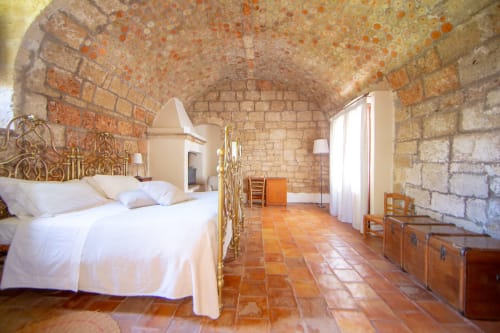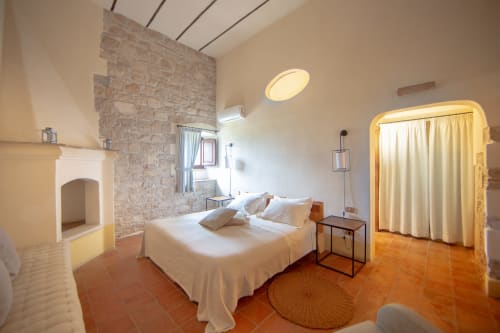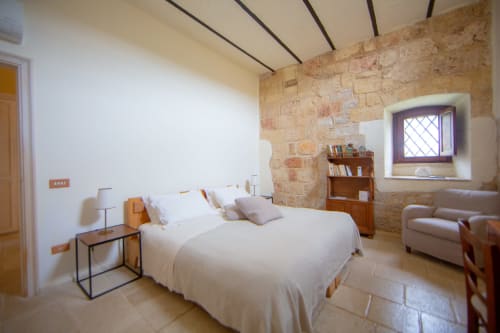"Lama di Luna è la casa dove oltre a vivere con Agata ed i miei figli Agostino e Stefano, oltre a raccogliere i frutti che la natura ed il nostro lavoro ci regalano, tra gatti, cani, cavalli, conigli, oche, papere, barbagianni e passerotti, si da ospitalità a tutti coloro che intendono condividere le magiche sensazioni che questo angolo di Murgia ci regala nella vita di tutti i giorni, come fossero coloni, paghi della loro giornata a "Lama di Luna".
Pietro Petroni
Lama come valle
Luna come donna, terra, fertilità
L'idea
Il suo nome non nasce per caso, nasce dalla ricerca accurata di individuare e restituire all'uomo i suoi cicli naturali di essere umano appartenente alla madre terra ed all'universo, quindi 'lama di luna' o lama come valle e luna come elemento strettamente collegato con la terra, ai suoi cicli di semina e di raccolta e di vita dove è incluso l'uomo come essere appartenente al tutto. Masseria del diciottesimo secolo abitata dai Coloni e Mezzadri, oggi restaurata in tre anni di lavoro minuzioso, con bioarchitettura e feng-shui nel pieno rispetto del luogo e della sua storia, immersa in 210 ettari di paesaggio naturale, oliveti, ciliegeti, mandorleti e vigneti, tutti coltivati biologicamente e certificati AIAB-ICEA.
Le camere degli ospiti, un tempo abitazioni dei coloni, ampie e luminose, tutte provviste di camino, si affacciano nella corte interna e sono provviste di acqua calda e riscaldamento riforniti da 48 pannelli solari, elettricità creata da 400 pannelli fotovoltaici, e letti in legno massello di pino ed olivo o in ottone del 1800, con materassi in latice naturale, lenzuola ed asciugamani di cotone grezzo, lavandini di terra cotta, saponi all'olio di oliva; ogni dettaglio è stato minuziosamente studiato per lasciare che l'energia circoli e perché in questi ambienti si senta il sapore di una volta.
Nel pieno rispetto della originale struttura e delle nostre grandi tradizioni edili rurali la masseria è stata ristrutturata con malte e materiali naturali, con il riutilizzo totale dei materiali già presenti, antiche tavole, mattoni, infissi del 1800 ed altro materiale come la stessa terra rossa o gialla. I letti sono posizionati a nord e gli spigoli vivi lasciano il posto a spigoli tondi, perché in natura tutto è tondo, tutto è armonia e tutto ritorna al tutto. I suoi quaranta fumaioli, i suoi trulli sparsi e la sua grotta raccontano da soli la storia delle genti che hanno vissuto, lavorato, riposato in questo posto magico dal panorama infinito.











